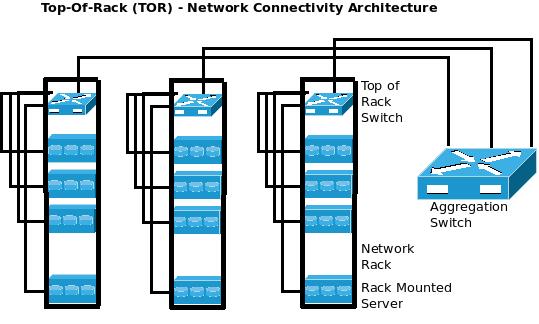
Chassis devices, which include blades (typically with 48 ports each) are popular and can scale up to a large number of users. Network managers achieve density in different ways, depending on the size of their building and the number of devices that must connect to each wiring closet. Each switch is a manageable element, so more switches lead to greater management complexity, associated costs and potential network downtime due to human error. High port density is desirable because of the costs associated with managing them. Since the primary purpose of an edge switch is to move around Ethernet packets, there’s no reason to buy expensive “feature-full” switches for most buildings. If ports are expensive, and only a few ports are available, then each time a user moves a workstation, printer or phone, someone has to go into a wiring closet and repatch to their network port - a cost that quickly overwhelms the savings of buying fewer ports. Low port costs are desirable because of the cost of patching and repatching devices in end-user workspaces. The edge switch is usually chosen based on two key requirements: high port density and low per-port costs. Each user may have only a single connection to a single edge switch, but everything above the edge switch should be designed with redundancy in mind.
Tor switch in fully connected topolofy Patch#
The edge switch makes the first connection between the relatively unreliable patch and internal wiring out to each user’s workstation and the more reliable backbone network within the building. The switches that connect directly to end-user devices are called “edge” or “access” switches. Once a solid physical layer is in place, IP architecture optimizes the flows within the network for performance, management and security purposes. When designing user access networks, the first constraint is always physical: It includes the wiring closets, the fan-out from closets to user workspaces, the distance between devices, and the number of floors and buildings. It’s important to remember that the physical tree topology of the network doesn’t necessarily match the IP subnet architecture of the network. In user access networks, the edge of the network (the branches of the tree) connects directly to end-user devices, while the core (the trunk of the tree) connects the entire user access network to the rest of the enterprise. In large buildings, these networks are built in two or even three layers in a tree topology. Generally, the user access network consists of a wiring plant between offices and per-floor wiring closets and switches in each wiring closet, as well as the interconnection between the wiring closets and building data centers. User access networks connect end-user devices, such as desktop and notebook computers, printers and Voice-over-IP handsets to enterprise networks. By creating a clear separation, network managers can focus on designing networks that are fit for purpose rather than over- or under-engineering.

Although many users spread through a building may look similar to many servers in a data center, the networks have very different performance and reliability requirements. These separations are logical points for routers and, in some cases, firewalls.

Of course, the definition of “required” can vary a great deal and change over time as different network fads (often driven by the products that manufacturers and resellers are marketing most heavily) come in and out of fashion.Ī good start is to break up networks into different zones, separating user access networks, whether staff or guest, from data centers. In essence, networks should be deployed using switching technology wherever possible, interconnected by routers only where required. One of the most time-tested (though somewhat paradoxical) rules for network design is this: Switch where you can, route where you must. When network designs follow these patterns, it’s easy to find a diverse mix of good products and, using those products, build reliable and economical networks. While every network is different and has to be crafted to the needs and scale of the enterprise, some helpful patterns have emerged that both network managers and network equipment manufacturers follow. At their heart of the network lie the workhorses - the often underappreciated switches and routers that connect users to data centers. Networks empower people to do their jobs, to communicate and collaborate, to teach and learn.


 0 kommentar(er)
0 kommentar(er)
